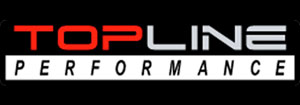Joining Bryden Wood in 2015 after several years as a structural engineer and in the FinTech (Finance/Technology) sector, Tanya’s focus was initially to strengthen Bryden Wood’s front end capability, incorporating an agile approach to project management, while also leveraging her background in engineering.. Tanya’s driver is always that projects follow the principles of.
Streamlined project lifecycle:.Understand how reference design accelerates the entire project process, from site selection to design and procurement, reducing design fees, expediting procurement, and providing certainty to the supply chain.. Watch the video above and find out how Bryden Wood's reference design approach reshapes the construction landscape, benefiting all stakeholders involved and significantly reducing project timelines.

The video not only highlights the immediate advantages of this method but also ties it to broader themes like design automation and construction platform adoption.Some landmark buildings gain their status retrospectively, as their significance only reveals itself with the benefit of hindsight.Others are designed deliberately with the intention of being ‘iconic’..In the case of the Forge, its landmark status comes as the culmination of many years of thinking and development, and the first embodied proof point of an approach to design and construction that has the potential to transform construction..

In doing so, it delivers a raft of benefits to the built environment and, in particular through significant reductions in embodied and operational carbon, to society more broadly (the construction sector currently accounts for 38% of global carbon emissions)..The terrace (rendering).

The Forge is a development of two nine-storey commercial office buildings, approximately 14,000m2 large, in central London, close to the Tate Modern.
It is a collaboration between.In actuality, electricity accounts for just 20% of our energy usage, and we can use these new nuclear technologies to produce not only electricity, but also emissions-free heat, which offers a variety of benefits and uses, from hydrogen production and the desalination of water, to the supply of heat to homes and businesses..
Problems with renewable energy: wind and solar challenges.Realistically, if we truly want to bend the curve on carbon emissions, we must start diversifying our strategies, relying on more than just renewables.
Advanced heat solutions represent excellent complementary technologies to wind and solar power, as these renewables face real challenges.For example, low density means that in order to harness enough energy to power the UK, we would need to build a solar farm of an impossibly large size.
